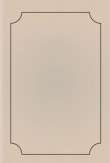أنت هنا
قراءة كتاب The Brain and the Voice in Speech and Song
تنويه: تعرض هنا نبذة من اول ١٠ صفحات فقط من الكتاب الالكتروني، لقراءة الكتاب كاملا اضغط على الزر “اشتر الآن"
but by fixing the cartilages of the lowest six ribs it prevents the diaphragm drawing them upwards and inwards (vide fig. 2). The greatest expansion is just above the waistband
(vide fig. 3). We are not conscious of the contraction of the diaphragm; we are conscious of the position of the walls of the chest and abdomen; the messages the mind receives relating to the amount of air in the bellows at our disposal come from sensations derived from the structures forming the wall of the chest and abdomen, viz. the position of the ribs, their degree of elevation and forward protrusion combined with the feeling that the ribs are falling back into the position of rest; besides there is the feeling that the abdominal muscles can contract no more—a feeling which should never be allowed to arise before we become conscious of the necessity of replenishing the supply of air. This should
be effected by quickly drawing in air through the nostrils without apparent effort and to as full extent as opportunity offers between the phrases. By intelligence and perseverance the guiding sense which informs the singer of the amount of air at his disposal, and when and how it should be replenished and voluntarily used, is of fundamental importance to good vocalisation. Collar-bone breathing is deprecated by some authorities, but I see no reason why the apices of the lungs should not be expanded, and seeing the frequency with which tubercle occurs in this region, it might by improving the circulation and nutrition be even beneficial. The proper mode of breathing comes almost natural to some individuals; to others it requires patient cultivation under a teacher who understands the art of singing and the importance of the correct methods of breathing.
The more powerfully the abdominal muscles contract the laxer must become the diaphragm muscle; and by the law of the reciprocal innervation of antagonistic muscles it is probable that with the augmented innervation currents to the expiratory centre of the medulla there is a corresponding inhibition of the innervation currents to the inspiratory centre (vide fig. 18, page 101).
These centres in the medulla preside over the centres in the spinal cord which are in direct relation to the inspiratory and expiratory muscles. It is, however, probable that there is a direct relation between the brain and the spinal nerve centres which control the costal and abdominal muscles independently of the respiratory centres of the medulla oblongata (vide fig. 18). The best method of breathing is that which is most natural; there should not be a protruded abdomen on the one hand, nor an unduly inflated chest on the other hand; the maximum expansion should involve the lower part of the chest and the uppermost part of the abdomen on a level of an inch or more below the tip of the breastbone; the expansion of the ribs should be maintained as long as possible. In short phrases the movement may be limited to an ascent of the diaphragm, over which we have not the same control as we have of the elevation of the ribs; but it is better to reserve the costal air, over which we have more voluntary control, for maintaining a continuous pressure and for varying the pressure.
II. THE REED
I will now pass on to the consideration of the voice-box, or larynx, containing the reed portion of the vocal instrument.



